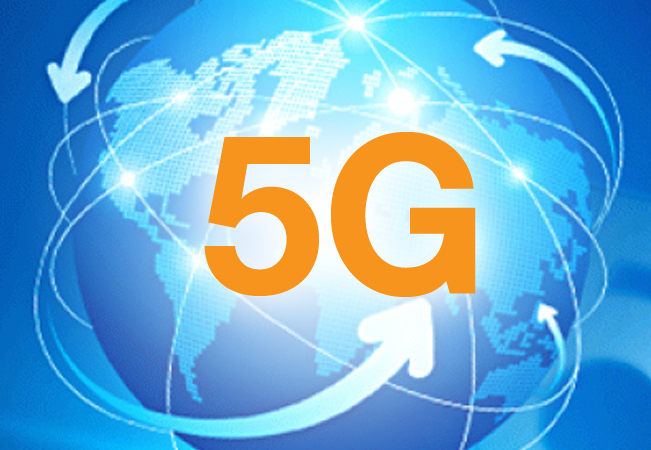5G technology is considered to have an impact on the daily lives of network users because of the capabilities that new wireless networks provide in terms of digital data transmissions which clearly presents a new look to each network user that is simple to see and evaluate.
The arrival of 5G networks will enable users to download an entire movie within seconds with the speed of 5G being at least five times faster than existing networks and possibly up to 100 times faster.
But the most important aspect of this new technology that is hard to understand and about which there is less awareness is the effect in terms of its influence on a country’s economy with the most significant impact being on the “competitiveness” of each country.
So far, only a few countries have recognized this and have clearly understood that if they want to maintain their competitiveness they must begin to study and to adjust their structures to begin to enter the 5G era.
Don’t forget that countries that keep pace with technological developments do not only facilitate improvements to convenience in their people’s daily lives but they also help their country’s economy to progress and also to be part of the evolving world economy.
Here are a few countries that have started to drive tangible 5G services and which have been recognized as being leaders in adapting to this new technology.
– The United States of America
The Federal Communications Commission (FCC) of the USA has defined in Spectrum Frontier Order regulations that responsible agencies must lay the foundation for the use of 5G technology in the USA by 2020.
Back in July 2016, the FCC issued regulations for 5G technology enabling the USA to become one of the first countries in the world to authorize “High Band Spectrum” high-frequency for use with 5G technology. In line with this new generation technology it is necessary to have more spectrum for wireless communications, a smaller cell size, a modulation scheme and support for more wireless devices in use simultaneously.
5G technology offers higher speeds in terms of connectivity of at least 1 gigabit per second and with lower network latency than 4G. In addition, it has bandwidth in the millimeter wave (mmW) spectrum to support the use of the large number of channels required.
The frequency bands that the USA opened for use in 2016 provide as much as four times the capacity than in the previous year while the new spectrum does not require a license for an up to 15-fold increase in usage.
In 2017, major service operators in the USA — AT&T, Verizon Communications Inc, Sprint Corp and T-Mobile US — have all developed and tested 5G network components but there have been no announcements of commercial services.
– South Korea
KT Corp, a wireless service operator in South Korea, has prepared to provide 5G services during the Winter Olympics in 2018 and successful trials of 5G by NCC Corp from Japan have been conducted using using the highest frequencies (extreme high frequencies between 30-300 GHz) for connectivity speeds of 3.2 gigabits per second.
An NEC system deploys “iPASOLINK EX” wireless transport equipment that uses “ultra-compact” microwave transmissions to connect between LTE base stations to distribute signals at 70-80 GHz which transmits better than other systems and uses encryption for better digital transmissions.
– Sweden and Estonia
Telia Company AB which provides telecommunications services in Sweden and Finland is co-operating with Telefonaktiebolaget LM Ericsson and the governments of Sweden and Estonia to prepare to open new wireless 5G services in both countries within 2018.
The main objective is to introduce a wireless communication system to be used to change the technology used in factories to be digital and to open up the Internet of Things (IoT). In addition, attention will be paid to the population in rural areas which presently do not have good support and who will be allocated higher bandwidth to provide them with a better potential for communications.
– Turkey
Turkey’s format and the move towards 5G should be a role model for developing countries that have businesses that are not strong and limited budgets to develop and test new technologies in order to embrace 5G by 2020. Turkey has established an forum comprised of relevant organisations called the “5G TR Forum” comprised of telecom network operators, relevant state agencies, non=profit organizations (NGOs) and domestic equipment makers. The goal is to facilitate and drive the transition to 5G as quickly as possible.
The “5G TR Forum” will bring all stake-holders together to collaborate, exchange data and ideas to drive Turkey to be one of the leading countries that embrace this technology which is believed will benefit research for development (R&D) and in addition to empowering the manufacturer of domestic hardware and software that can support new technologies.
– Japan
The goal of Japan is to launch 5G services by 2020. Over the past 2-3 years the Communications Ministry of Japan has met with leading service operators — NTT Docomo Inc, KDDI Corp and Softbank Group Corp and including private businesses that manufacture communications equipment and base stations such as Panasonic Corp, Fujitsu Limited and Sharp Corp for discussions to stimulate and encourage technology development. The aim is to make Japan’s 5G communications more than 10 times the speed of 4G and at least 100 times faster than LTE.
The short-term goal is to incorporate Japan’s 4K and 8K high-definition video services into an Internet service which requires a very high-bandwidth capacity.
– China
China is also set to launch commercial 5G services by 2020, although China’s unique political and economic structure has led many to believe that in practice the implementation process may be delayed such as the deployment of 4G in China which lagged behind South Korea and Japan by many years. But what is interesting is that when it is necessary to have a government-controlled infrastructure in place and everything is at hand, service availability can be provided immediately.
In June 2017, Ciena Corp, the US maker of communications and telecommunications equipment, assigned Analysys Mason to conduct a survey about 5G usage trends from service operators in each region around the world. It found that 28 percent of service providers in the Asia-Pacific region expected to use the technology by 2020, in contrast to European carriers with only 8 percent expecting to use 5G between 2018-2023. The key drivers for this were the Winter Olympics in Korea in 2018 and the Summer Olympics in Japan in 2020.
In line with many previous forecasts, the commercial use of 5G technology will see the Asia-Pacific region as the core leader globally which means that even countries such as Thailand cannot avoid catching up to retain its competitive advantage when compared with neighboring countries in the region.
อ่าน เมื่อโลกเคลื่อนสู่ยุค 5 จี เอเชียก้าวนำ-ไทยต้องตามให้ทัน!










